Achates Power: The Squeaky-Clean Diesel Engine Of Tomorrow?
The opposed-piston, two-stroke diesel engine is over 100 years old, but this one meets NOx emissions standards well into the future. Say what? In the age of EV this and hybrid that, Achates Power is proving that diesel is anything but dead. In fact, its 10.6L three-cylinder Class 8 engine is already ahead of the curve, on target to be one of the cleanest-burning diesels ever manufactured. On top of crushing the toughest NOx standard on the books six years in advance, the innovative power plant beats current CO2 (carbon dioxide) regulations (460g) by more than 8-percent—which means it also meets the EPA’s 2027 mandate of no more than 432g of CO2.
Capitalizing on the diesel infrastructure already in place, Achates Power engineered its 10.6L opposed-piston engine to meet future emissions and fuel economy standards more cost-effectively than what any other current solution on the market offers. Even better, it could have an immediate impact on pollution reduction rather than the promise of EV’s doing it in 10, 20 or even 30 years’ time. But how does the company’s engine accomplish its eco-friendly feats? Below, we’ll venture inside the opposed-piston engine to show you why it’s so efficient and then share how Achates Power was able to fine-tune a century-old engine design for the modern age.
Opposed-Piston Engines 101
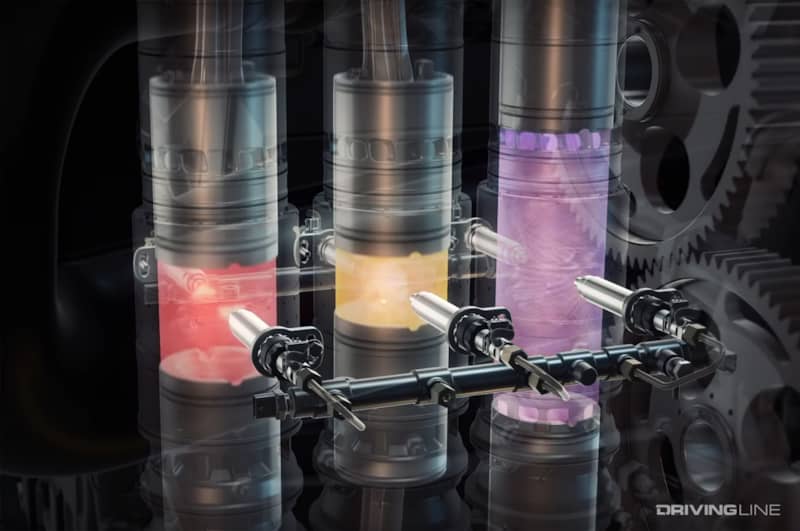
For those of you who’ve never read up on opposed-piston (OP) engines or anyone that needs a quick refresh on how they work, here it is. First off, they are known for their superior fuel efficiency and simplicity. There is no cylinder head on an opposed-piston engine. That means no valves, no valve seats, no camshafts, no valvetrain to speak of. Each cylinder houses two pistons, which move toward each other (and the centralized combustion area) during the compression stroke. Opposed-piston engines also employ two crankshafts, one located at the end of each cylinder. They feature twice the stroke-to-bore ratio of a traditional 4-stroke engine which accounts for considerably less heat loss. Cylinder wall ports, covered and then uncovered as the pistons move within the cylinder bore, allow air into the cylinder as well as exhaust to escape.
Achates Power OP Engine
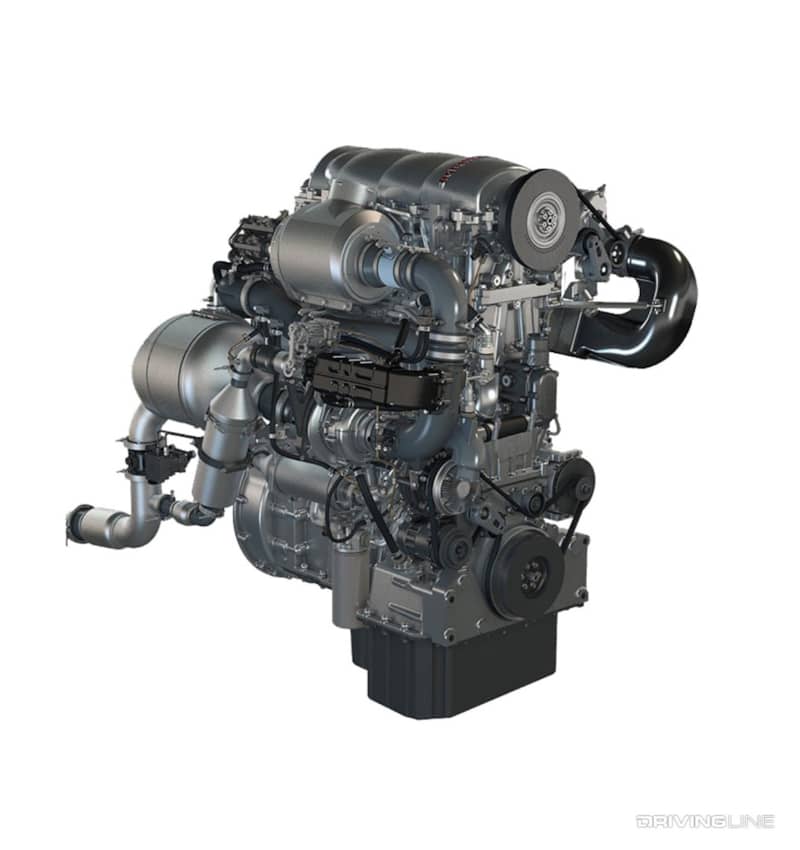
The 10.6L from Achates Power makes good on opposed-piston technology’s advantageous stroke-to-bore ratio. Its bore measures 4.72-inches (120mm) and its stroke 12.28-inches (312mm) for a ratio of 2.6:1. There are three cylinders, six pistons and the engine’s compression ratio checks in at 18.0:1. Given its displacement, maximum horsepower of 450 hp and peak torque rating of 1,750 lb-ft, it’s obvious what the company’s engine is targeting: Class 8 trucks. Specifically, Achates is striving to match the performance of 13 liter, inline-six, 4-stroke engines in the same class, while its fuel efficiency should blow them out of the water. More on that in a bit.
Efficient Combustion & Scavenging
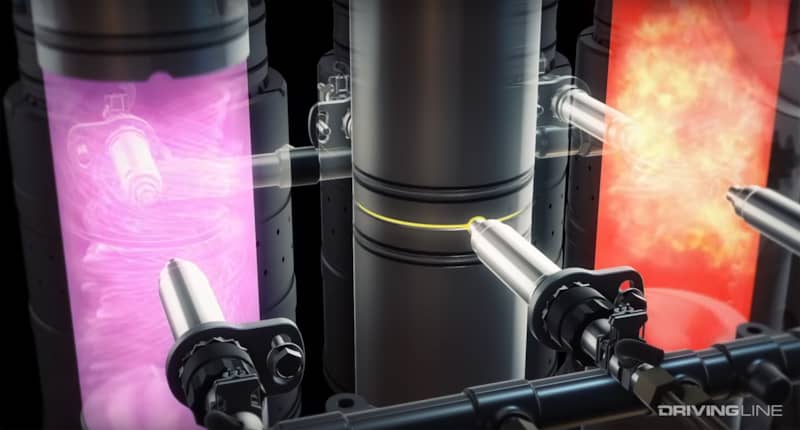
Still an internal combustion engine, the opposed piston Achates 10.6L can’t get away from producing NOx and particulate matter (PM) emissions. PM production is managed by shaping the contour of each piston to complement the other one in the same cylinder and relying on quick-firing, high-pressure common-rail fuel injectors for the engine’s injection events. On the NOx-fighting front, the engine’s efficient scavenging (its supercharger provides for ample fresh low-pressure airflow to effectively scavenge the cylinders) allows peak combustion temperatures to be kept in check, which is what cuts down on in-cylinder NOx emissions.
DOC, DPF and Close-Coupled SCR
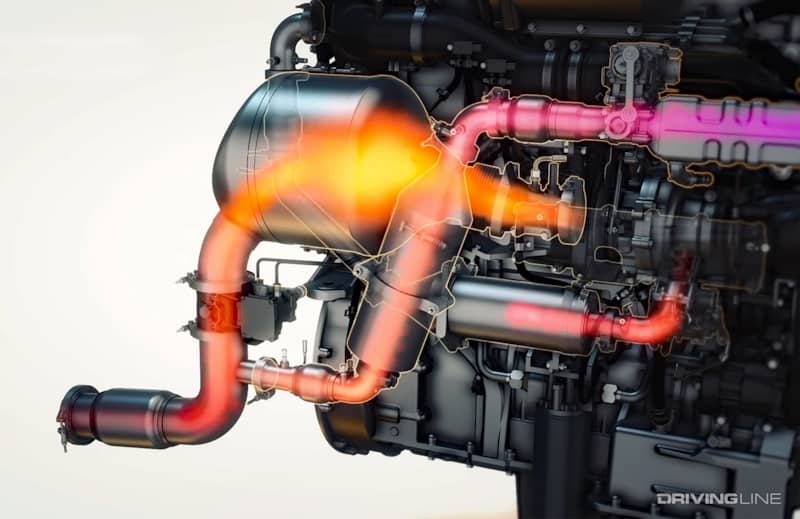
Further NOx reduction (an optimized in-cylinder combustion process alone can’t solve it) will come in the form of exhaust aftertreatment, with many of the acronyms diesel owners have come to know (and that many loathe). A diesel oxidation catalyst (DOC), diesel particulate filter (DPF) and selective catalytic reduction (SCR) are all in play here, complete with diesel exhaust fluid (DEF) the end-user will have to top off. An electronically-heated catalyst (EHC) is also in the mix on Achates’ concept engine and we presume exhaust gas recirculation (EGR) will be present on every engine, too.
Achates Vs. The Low NOx 4-Stroke Contender
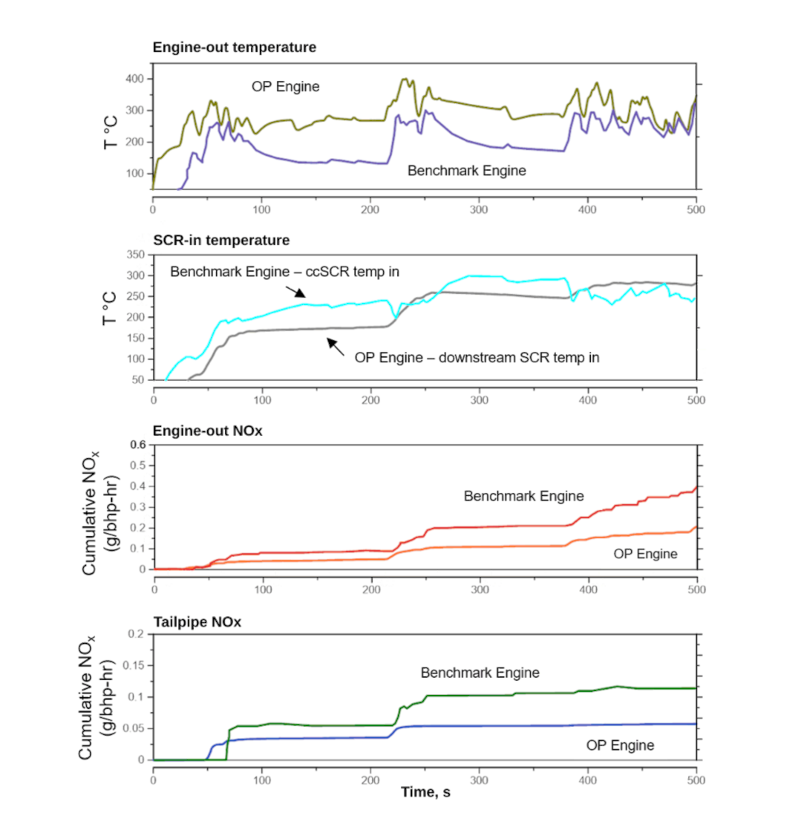
With all of those emissions control devices in place, including an engine design that inherently produces lower NOx, the 10.6L opposed-piston engine already meets the uber-stringent 0.02 g/bhp-hr (g per brake horsepower-hour) NOx emissions requirement California has proposed for 2027 over the FTP (federal test procedure) cycle. That 0.02 g/bhp-hr NOx standard represents a 90-percent reduction of the standard in place at the present time. In the exhaust temperature and NOx emissions graphs shown above (obtained over the cold-start FTP cycle), Achates convincingly outperforms the benchmark engine, a 12.7L 4-stroke diesel engine concept for meeting California’s 2027 low NOx emissions standard.
Pending Class 8 Fuel Efficiency Testing
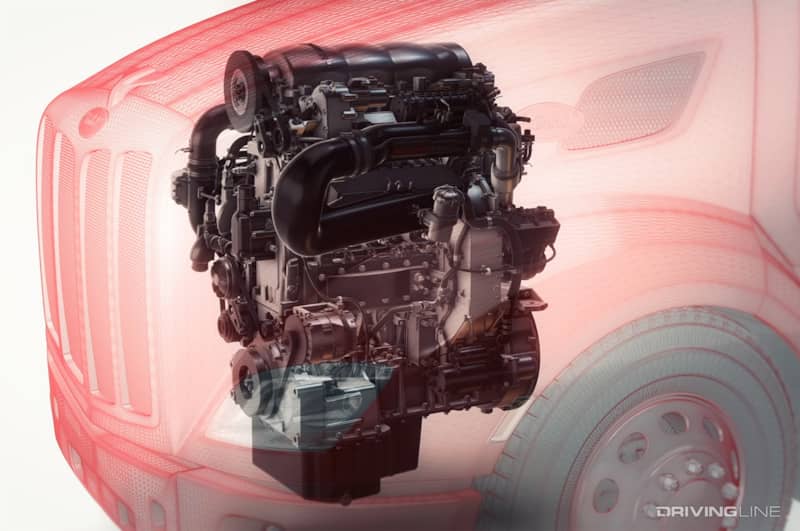
Although its 10.6L OP power plant is still a concept, Achates Power claims class 8 trucks will be 20 to 30-percent more fuel efficient with one under the hood. If that holds true, it could save transportation companies tens of millions of dollars in annual fuel costs, depending on the size of the fleet. Real-world fuel efficiency testing is scheduled for later this year with an Achates engine powering a model 579 Peterbilt.
Other Achates Power Engines And Applications
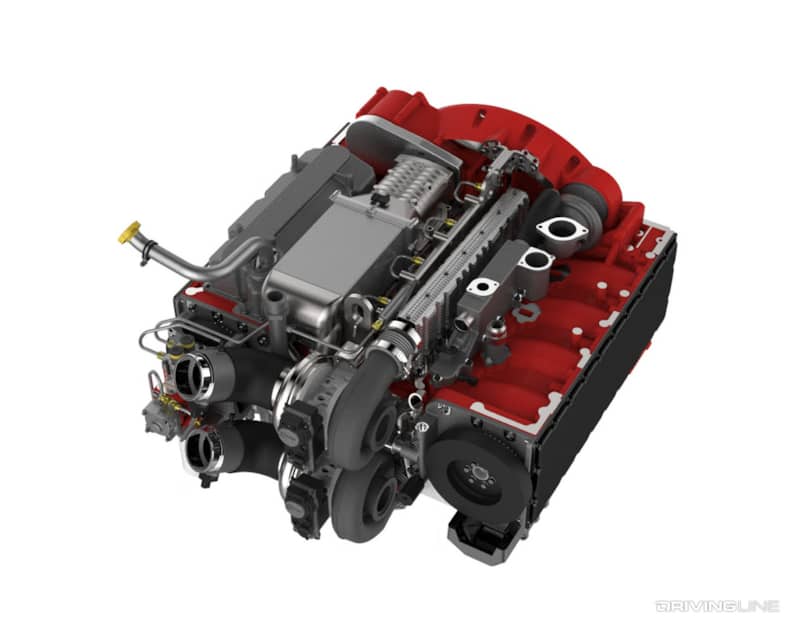
In early March, Achates Power announced it would also begin development of engines targeted at the Class 3-6 medium duty truck markets. These diesel power plants will be two and four-cylinder variants of the same opposed-piston and two-stroke design. The project is aided by a $5 million grant from the U.S. Department of Energy and will be conducted with assistance from Isuzu, the University of Wisconsin-Madison and Clemson University. Another fun fact is that one of Achates Power’s opposed-piston engines will be in series production by Cummins in 2024 for use in the U.S. Army. Check out the Advanced Combat Engine or ACE for more on that program.
More From Driving Line
- Confused by all the emissions control acronyms on modern diesel engines (EGR, DPF, DOC, SCR, etc.)? A full glossary and functionality description of each can be found here.







